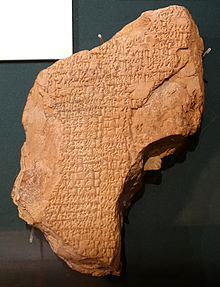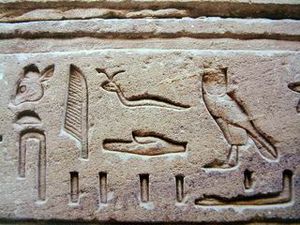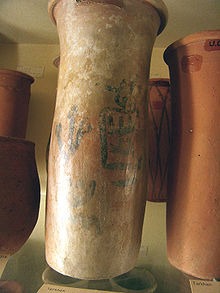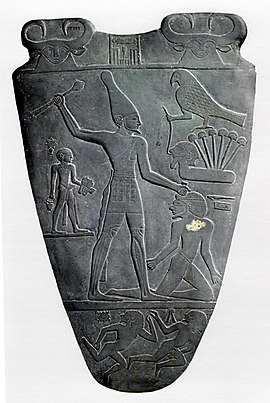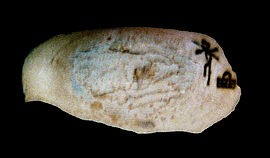Throughout history, humans have used names to identify and distinguish themselves from others. The oldest known names in the world date back thousands of years and provide a fascinating glimpse into ancient civilizations. These names have been passed down through generations and continue to be used in various forms today.
Imagine the difficulty of calling someone or something by a long list of an adjective. It wouldn’t sound pleasant and concise if you ever call someone like ‘the girl in blue,’ or perhaps something like ‘hey,’ all the time. Names are the connections that connect to their individuality. Names make everything specific and respectful. Without names, were just pronouns.
In the army, soldiers wear dog tags to identify their bodies if they were killed or wounded in a battle. That’s how important names are. That’s why babies are given names as soon as they were born, or why we give names to the things valuable for us. To be identified and specified.
Origin of Names
Names likely trace back to when the first human—Adam—was created. According to the Christian Bible, it was God who named Adam, using a Hebrew word meaning ‘man.’ Adam, in turn, gave names to all the created animals, perhaps marking the earliest form of ‘pet names’ that date back many years. As Adam and Eve had sons and daughters, they began naming them based on their characteristics. For example, Abel means ‘breath’ in Hebrew, while Cain means ‘acquired.’ In those earlier times, names often reflected patronyms or matronyms, derived from the father’s or mother’s name.
But if you’ve ever wondered about Og and Thak—the cavemen characters in Garry Larson’s comic strips—you might be asking yourself what cavemen called each other, or if they had names or terms of endearment. Cave dwellers are often depicted in a romanticized manner as early historic hunters. According to the history of language development, early Homo sapiens adapted sounds they heard into words. As communities grew, they likely began creating names to distinguish themselves from others.
Here are the lists of where the most known names in the world were found:
Jiahu Symbol in Shards of Pots
In ancient China, traditional Chinese characters were discovered on pottery fragments excavated in 1999 in Henan, China. These pottery shards dated back to 6600-6200 BC. However, the symbols found on these jar fragments did not match the Chinese characters used during that period. Instead, they appeared to be personal marks, possibly derived from the earliest Chinese character known as the ‘Oracle Bone Script.’ These individually invented symbols bore some resemblance to a Chinese character interpreted as ‘eye’ and ‘sun or day.
Ancient Sumerian Clay Tablet
On a Sumerian cuneiform tablet dating back to the Jemdet Nasr period (3200-3101 BC), names like ‘Kushim,’ ‘Gal-san,’ and the identified slaves ‘Sukkalgir’ and ‘Enpap-x’ were inscribed. These names represent some of the oldest recorded in history on a tablet.
There is debate surrounding the name ‘Kushim,’ whether it was a name or referred to a profession—specifically, that of a barley accountant. This uncertainty arises from the fact that most of the eighteen cuneiform tablets bearing the name ‘Kushim’ primarily contained reports related to barley.
In contrast, the names ‘Gal-san,’ presumably a slave owner, and the two reported slaves, ‘Sukkalgir’ and ‘Enpap-x,’ were all from the same period as the tablets mentioning ‘Kushim.’ The identification of Sukkalgir and Enpap-x as slaves is supported by their names being written alongside symbols used to denote slavery during the Sumarian era.
Egyptian Hieroglyphics
Many of the well-known historical names have been discovered through Egyptian hieroglyphics. Hieroglyphics, also known as the Egyptian Sacred Writings, were formal scripts used during ancient Egyptian periods. They comprised around 1,000 characters that were readable and writable mainly by individuals of higher status, such as the Pharaohs, priests, and nobles.
Egyptian Pharaoh: ‘Iry-Hor’
In a tomb dating back to the early Egyptian period, an Egyptologist named Flinders Petrie discovered a symbol resembling ‘r-Hr’ or ‘Iry Hor’. Despite the contested existence of this pre-dynastic Pharaoh by another Egyptologist, Toby Wilkinson, further excavation at the grave site in Abydos by the German Egyptologist Gunter Dreyer confirmed the existence of ‘Iry-Hor’.
Egyptian Pharaoh: ‘Ka’
The vessel on which the name of Ka, the Pharaoh, was discovered held significant historical value. Ka, also known as Sekhen, succeeded Iry-Hor as an Egyptian Pharaoh. His tomb, unearthed in 1902 along with various artifacts inscribed with his name, dates back to around 3200 BC.
Although the exact pronunciation of Ka’s name remains uncertain, the alternative name ‘Sekhen’ was found on vessels alongside Ka’s serekh—a crucial crest bearing his royal title.
Egyptian Pharaoh: ‘Scorpion II’
Numerous Egyptian artifacts dating between 3200-3000 BC bear inscriptions associated with King Scorpion or Scorpion II of Nekhen, Egypt, yet the exact location of his tomb remains undiscovered.
King Scorpion succeeded Ka and remains a subject of dispute among modern Egyptologists. Some argue that he may have been another name for Narmer, a Pharaoh who reigned around 3100 BC, while others assert that Narmer and King Scorpion were distinct rulers.
Egyptian Pharaoh: ‘Narmer’
Narmer, a Pharaoh reigning approximately between 3150 and 3100 BCE, left his mark on various Egyptian artifacts, notably on the Narmer Palette, also known as the ‘Great Hierakonpolis Palette.’ This artifact depicted Narmer as the King who unified Upper and Lower Egypt.
Queen of Egypt: Neithhotep
Neithhotep, the Queen of Egypt, appears in historical records through artifacts dated between 3150-3125 BCE. Her name is prominent on various pieces, including an alabaster fragment. Her grand Mastaba, an Ancient Egyptian tomb, signifies her status as one of the earliest known high-ranking Egyptian women.
Many Egyptologists previously thought that Neithhotep was an unknown King of Ancient Egypt. Still, through the development of the study of the Ancient Egyptian writings, they have found out that Neithhotep was a woman of high rank.
Enheduanna
Enheduanna was a remarkable person who lived in ancient Mesopotamia around 2300 BC. She is considered to be one of the first named high priestesses and writers in history. Being the daughter of Sargon of Akkad, she was the most admired priestess in Ur. The importance of Enheduanna can be found in her contributions to Sumerian literature, particularly the hymns and poetry she wrote in honor of Inanna, the Sumerian goddess of war and love. Her writings revealed her devotion to the divine and offered insight into the cultural and spiritual customs of her era. Findings of Enheduanna’s writings on cuneiform tablets not only establish her as a literary pioneer but also provide insight into the position of women in pre-Mesopotamian society.
Khasekhemwy
Khasekhemwy is an intriguing ancient Egyptian name with a lot of cultural and historical significance. The name itself means “The Two Powerful Ones Appear,” so it has symbolic meaning. It represents the union of Upper and Lower Egypt under a single ruler and is a reflection of the transitional era in ancient Egypt. The name’s meaning reflects the social and political transformations that took place during Khasekhemwy’s rule, which was a crucial time in Egypt’s early dynastic history.
Enmebaragesi
Enmebaragesi is an old name from Sumerian history, specifically connected to the earliest Kish rulers. At roughly 2600 BC, he was one of the first kings in Mesopotamian history to be officially recorded. Numerous Sumerian texts and king lists bear Enmebaragesi’s name, indicating his importance and power in the area at the time. Like many ancient Sumerian names, the name itself has linguistic and symbolic meaning. “Me” means “foundation” or “pillar,” possibly indicating his role in laying the groundwork for his city or authority, while “En” indicates a priestly or divine status. The importance of Enmebaragesi in historical accounts illuminates Mesopotamia’s early political system and the changing role of kings.
Sargon of Akkad
The name “Sargon of Akkad” resonates profoundly in ancient history as a pivotal figure who played a transformative role in Mesopotamia around 2300 BC. Sargon established the Akkadian Empire and brought the Sumerian city-states under his rule. It is possible that Sargon’s birth name was Sharru-kin, which means “the true king”. His name has great historical significance as it represents the establishment of the first ever multiethnic empire. The term “Sargon” may have derived from the phrase “true king” or “legitimate king,” denoting his legitimacy and authority.
Imagine the difficulty of calling someone or something by a long list of an adjective. It wouldn’t sound pleasant and concise if you ever call someone like ‘the girl in blue,’ or perhaps something like ‘hey,’ all the time, instead of simply referring to them as Kelly Larkins.
Conclusion
Exploring the earliest known names reveals an engaging journey to the prehistory of humanity. These names, which range from those of Kushim and Enmebaragesi in Mesopotamia to those of Enheduanna, Khasekhemwy, and Sargon of Akkad, signify significant junctures in ancient civilizations. Every name serves as a kind of time capsule, providing information about ancient societies, their kings, and cultural developments. They provide poignant reminders of our origins, illuminating the ways in which language, identity, and power shaped the first stages of human civilization.




